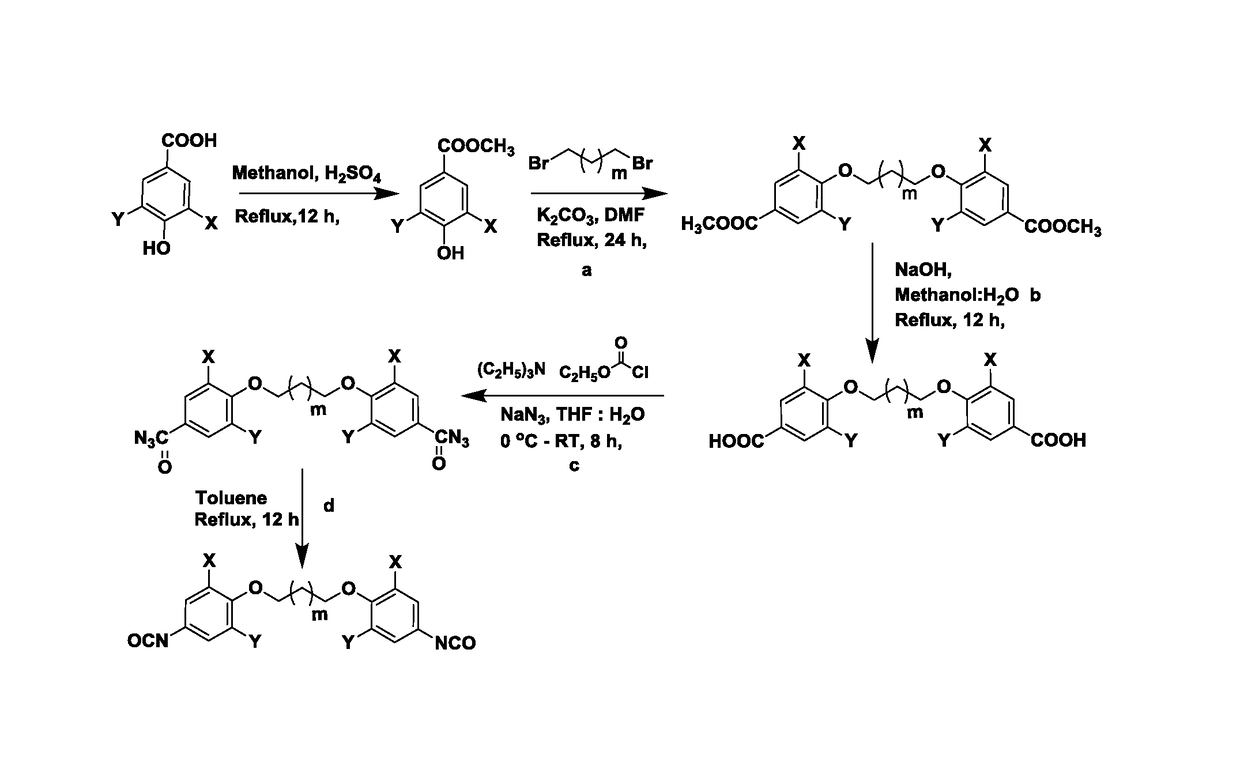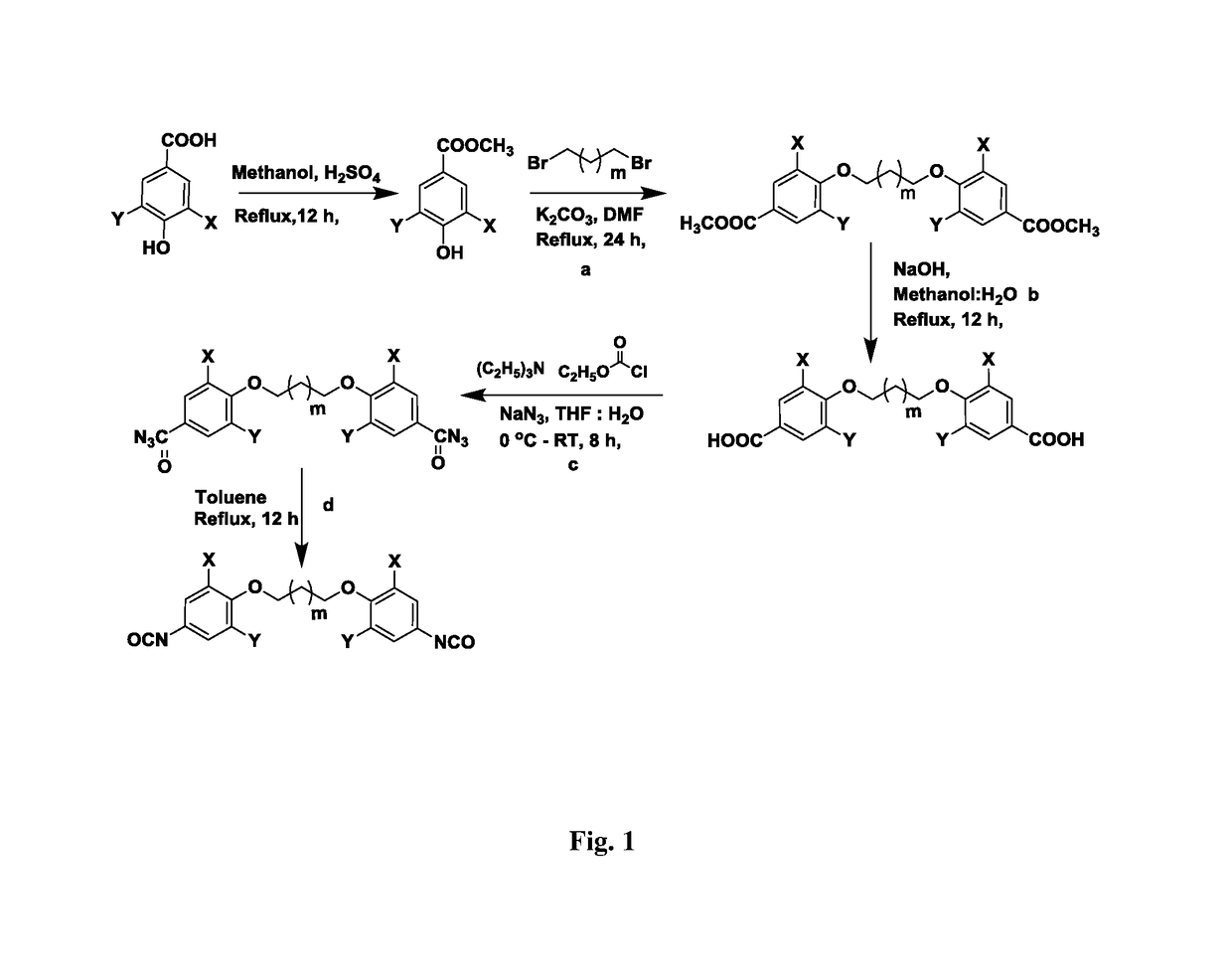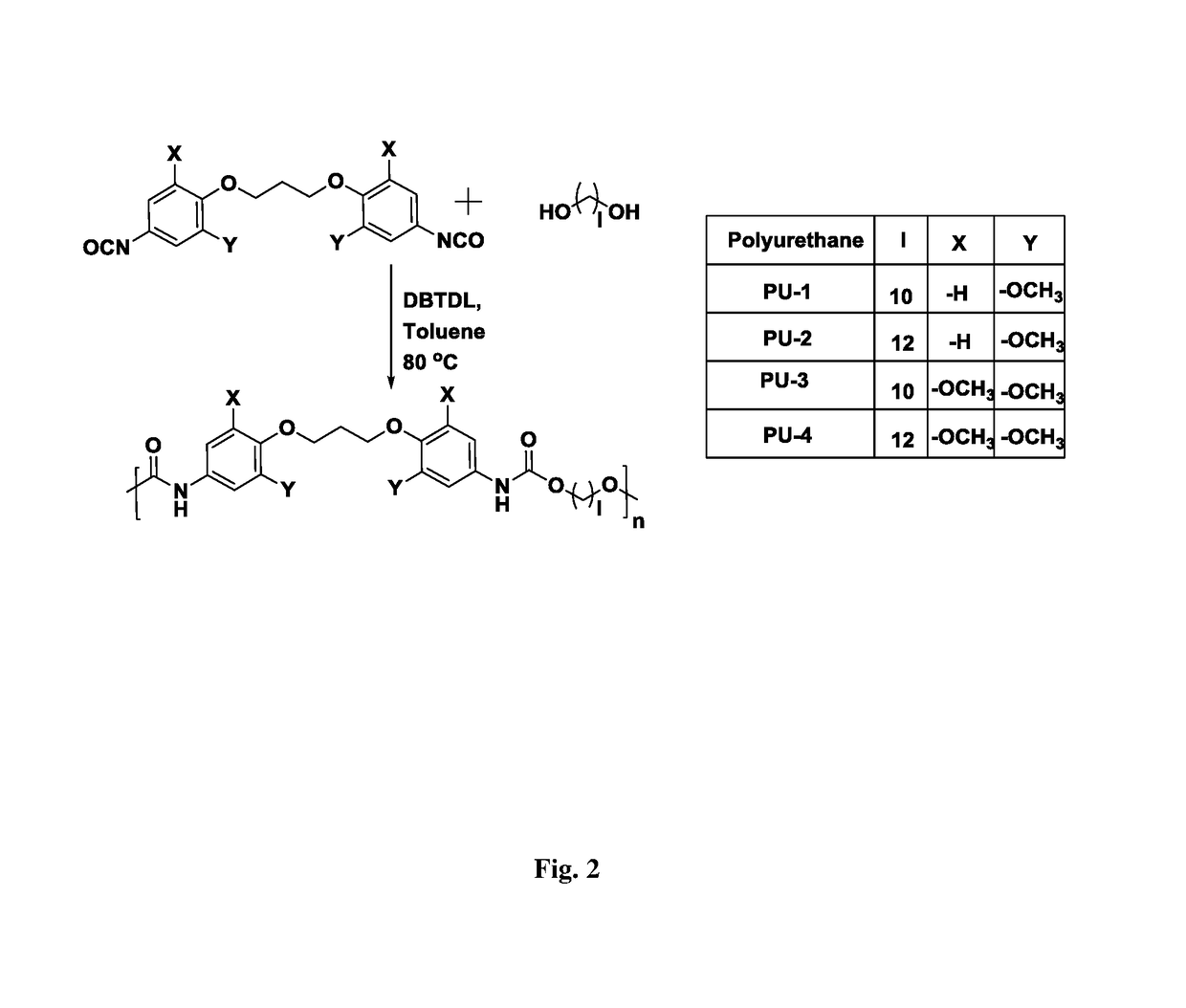Bio-based aromatic diisocyanates for preparation of polyurethanes
a technology of aromatic diisocyanates and polyurethanes, which is applied in the field of bio-based aromatic diisocyanates, can solve the problems of scarce examples of aromatic diisocyanates based on bio-derived chemicals
- Summary
- Abstract
- Description
- Claims
- Application Information
AI Technical Summary
Benefits of technology
Problems solved by technology
Method used
Image
Examples
example 1
[0071]A. General Procedure for Synthesis of Aromatic Diesters (2)
[0072]Into a 250 mL two-necked round bottom flask equipped with a reflux condenser were placed, methyl vanillate / syringate (80 mmol), anhydrous potassium carbonate (44.2 g, 320 mmol) and dry N,N-dimethylformamide (150 mL). The reaction mixture was heated at 100° C. for 1 h and then 1,3-dibromopropane (8.04 g, 40 mmol) was added dropwise. The heating was continued at 100° C. for 11 h. After completion of reaction (TLC), the reaction mixture was poured into ice cold water (500 mL) The solid product was collected by filtration and the solid was dissolved in dichloromethane (300 mL). The dichloromethane solution was washed with water (2×100 mL), dried over anhydrous sodium sulfate, filtered, and concentrated in a vacuo. The crude product was purified by silica gel column chromatography.
a) Synthesis of dimethyl 4,4′-(propane-1,3-diylbis(oxy))bis(3-methoxybenzoate)
[0073]Yield: 80%; M.P.-158° C.; 1H NMR (200 MHz, CDCl3, δ / ppm...
example 2
[0087]General Procedure for Synthesis of Poly(Ether Urethane)s
[0088]Into a 100 mL two-necked round bottom flask equipped with a reflux condenser and a nitrogen inlet were charged, aromatic diisocyanate (4.69 mmol), aliphatic diol (4.69 mmol), DBTDL (3×10−3 mmol) and dry toluene (25 mL). The reaction mixture was heated at 80° C. for 8 h. The toluene was removed under reduced pressure at 60° C. and polymer was obtained. The polymer was dissolved in N,N-dimethylacetamide, precipitated in methanol, filtered and dried in vacuum oven at 40° C. for 12 h.
a) Synthesis of poly(ether urethane)s based on 1,3-bis(4-isocyanato-2-methoxyphenoxy)propane and 1,10-decanediol
[0089]IR (KBr): v=3328, 1733, 1700 cm−1; 1H NMR (200 MHz, DMSO-d6, δ / ppm): 9.37 (s, 2H), 7.17 (d, 2H), 6.84-6.95 (m, 4H), 4.03 (t, 8H), 3.69 (s, 6H), 1.9-2.13 (m, 2H), 1.52-1.62 (m, 4H), 1.18-1.30 (m, 12H); 13C NMR (50 MHz, DMSO-d6, δ / ppm): 153.6, 152.9, 135.2, 131.8, 96.0, 69.9, 64.1, 55.6, 30.4, 28.9, 28.7, 28.5, 25.3.
b) Synthes...
PUM
| Property | Measurement | Unit |
|---|---|---|
| temperature | aaaaa | aaaaa |
| temperature | aaaaa | aaaaa |
| pressure | aaaaa | aaaaa |
Abstract
Description
Claims
Application Information
 Login to View More
Login to View More - R&D
- Intellectual Property
- Life Sciences
- Materials
- Tech Scout
- Unparalleled Data Quality
- Higher Quality Content
- 60% Fewer Hallucinations
Browse by: Latest US Patents, China's latest patents, Technical Efficacy Thesaurus, Application Domain, Technology Topic, Popular Technical Reports.
© 2025 PatSnap. All rights reserved.Legal|Privacy policy|Modern Slavery Act Transparency Statement|Sitemap|About US| Contact US: help@patsnap.com



